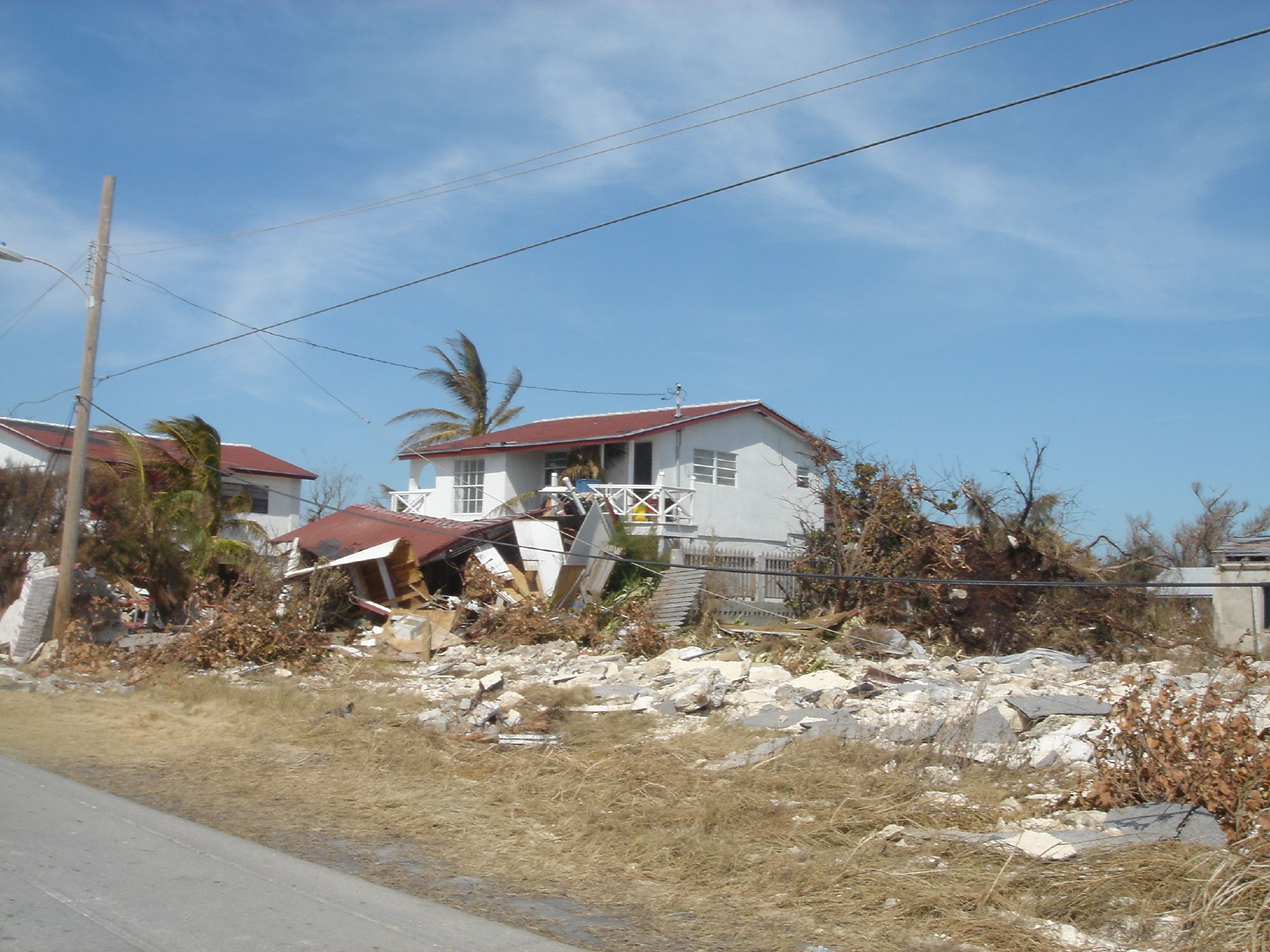Hurricane Wilma, 2005
Enlarge text Shrink text- Work cat.: 2006540474: Hurricane digital memory bank [electronic resource].
- Wikipedia web site, viewed July 5, 2006(Hurricane Wilma; category 5 hurricane in the 2005 hurricane season; devastated parts of the Yucatan Peninsula and southern Florida)
Hurricane Wilma was the most intense tropical cyclone in the Atlantic basin and the second-most intense tropical cyclone in the Western Hemisphere, both based on barometric pressure, after Hurricane Patricia in 2015. Wilma's rapid intensification led to a 24-hour pressure drop of 97 mbar (2.9 inHg), setting a new basin record. At its peak, Hurricane Wilma's eye contracted to a record minimum diameter of 2.3 mi (3.7 km). In the record-breaking 2005 Atlantic hurricane season, Wilma was the twenty-second storm, thirteenth hurricane, sixth major hurricane, fourth Category 5 hurricane, and the second costliest in Mexican history. Its origins came from a tropical depression that formed in the Caribbean Sea near Jamaica on October 15, headed westward, and intensified into a tropical storm two days later, which abruptly turned southward and was named Wilma. Continuing to strengthen, Wilma eventually became a hurricane on October 18. Shortly thereafter, explosive intensification occurred, and in only 24 hours, Wilma became a Category 5 hurricane with wind speeds of 185 mph (295 km/h). Wilma's intensity slowly leveled off after becoming a Category 5 hurricane, and winds had decreased to 150 mph (240 km/h) before it reached the Yucatán Peninsula on October 20 and 21. After crossing the Yucatán, Wilma emerged into the Gulf of Mexico as a Category 2 hurricane. As it began accelerating to the northeast, gradual re-intensification occurred, and the hurricane was upgraded to Category 3 status on October 24. Shortly thereafter, Wilma made landfall in Cape Romano, Florida, with winds of 120 mph (190 km/h). As Wilma was crossing Florida, it briefly weakened back to a Category 2 hurricane, but again re-intensified as it reached the Atlantic Ocean. The hurricane intensified into a Category 3 hurricane for the last time, before weakening while accelerating northeastward. By October 26, Wilma transitioned into an extratropical cyclone southeast of Nova Scotia. Early in Wilma's duration, flooding and landslides caused 12 deaths in Haiti and 1 death and about $93.5 million in damage in Jamaica. The Yucatán Peninsula experienced intense winds, torrential precipitation, and high storm surge. Wilma damaged 28,980 homes and 473 schools. The hurricane caused $4.6 billion in damage and eight deaths in Mexico. In Cuba, the storm damaged crops, roads, railways, 7,149 homes, 364 schools, and 3 hospitals. A total of 446 dwellings were destroyed. Damage throughout Cuba reached about $704 million. In Florida, strong winds impacted much of the southern portions of the state, while storm surge led to coastal flooding, especially in Collier and Monroe counties. The former, where the storm made landfall, suffered about $1.2 billion in damage, with 16,000 businesses and homes impacted to some degree. In the Miami metropolitan area, Palm Beach County reported damage to nearly 59,000 businesses and homes, while 5,111 residences in Broward County and at least 2,059 others in Miami-Dade County became uninhabitable. Approximately $19 billion in damage and 30 deaths occurred in Florida. Within the Bahamas, Wilma caused one death and damaged or destroyed hundreds of homes, mostly on Grand Bahama. Overall, at least 52 deaths were reported and damage totaled to $26.5 billion, most of which occurred in the United States.
Read more on Wikipedia >
 Topic
Topic







